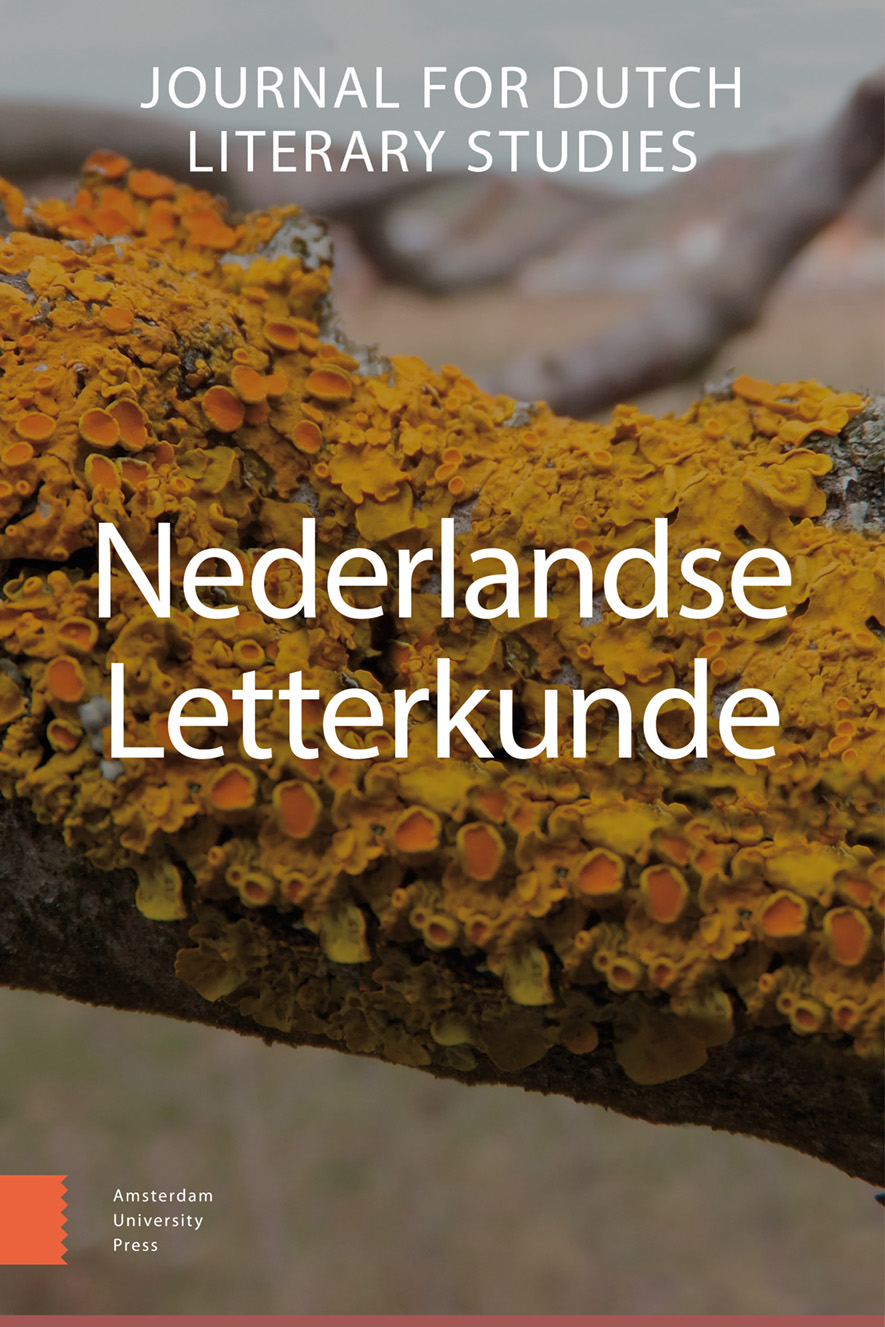- Home
- A-Z Publications
- Nederlandse Letterkunde
- Previous Issues
- Volume 25, Issue 3, 2020
Nederlandse Letterkunde - Volume 25, Issue 3, 2020
Volume 25, Issue 3, 2020
-
-
‘Jij zult nooit een slachtoffer blijven [...], want jij bent een held’
More LessAuthors: Sarah Beeks, Charlotte de Beus & Esther Op de BeekAbstractWho is allowed to occupy which space in a multicultural society? Whose worlds and perspectives are represented in the fictional space? In this article we investigate the answers to these questions by means of a narratological analysis, informed by insights from postcolonial and cultural theory, of the novel Dertig dagen (2015) by Annelies Verbeke. While Saskia Pieterse (2014) suggests that in many recent novels ‘the Other’ is often a flat character and merely the embodiment of the theme of multiculturalism, in Dertig dagen a Senegalese-born Fleming is the main focalizing character. Starting from an analysis of the narratological position he occupies in the novel, we will focus on what the reader sees through his eyes. Our attention is drawn to the representation of different physical and imagined spaces that are not equally accessible to everyone as well as to the discrepancy between inner worlds and the outside world. This discrepancy exposes the connection between fear and various forms of violence, between multiculturalism and happiness. Using Sara Ahmed’s theoretical assumptions – from The Politics of Emotions (2004) and The Promise of Happiness (2010) – and Alan Corkhill's conceptualization of Spaces for Happiness (2012), we analyse the violent effect – in terms of dissemination and internalization – of dominant norms in different spaces.
-
-
-
Van boerderij tot buitenhuis
More LessAuthor: Tommie van WanrooijAbstractDutch literary historians have nearly always regarded the genre of the river poem (in Dutch: stroomdicht) as uninteresting. When river poetry is discussed, it is usually discussed in the context of odes to cities. Anglo-Saxon literary historians have paid more attention to the genre of river poetry and interpreted the early-modern river poem in the context of both the search for national and regional identity and the confirmation or refutation of male, upper-class authority. In this article, it is demonstrated that these frameworks of interpretation can be of use in the analysis of two (once) well-known exponents of Dutch eighteenth-century river poems: Dirk Smits’s De Rottestroom (1750) and N.S. van Winter’s De Amstelstroom (1755). Both river poems establish and justify male, upper-class authority; Smits constructs a predominantly regional identity through images of the Rotte basin, while Van Winter cultivates a national identity through the image of Amsterdam as centre of the Dutch Republic.
-
Volumes & issues
Most Read This Month


